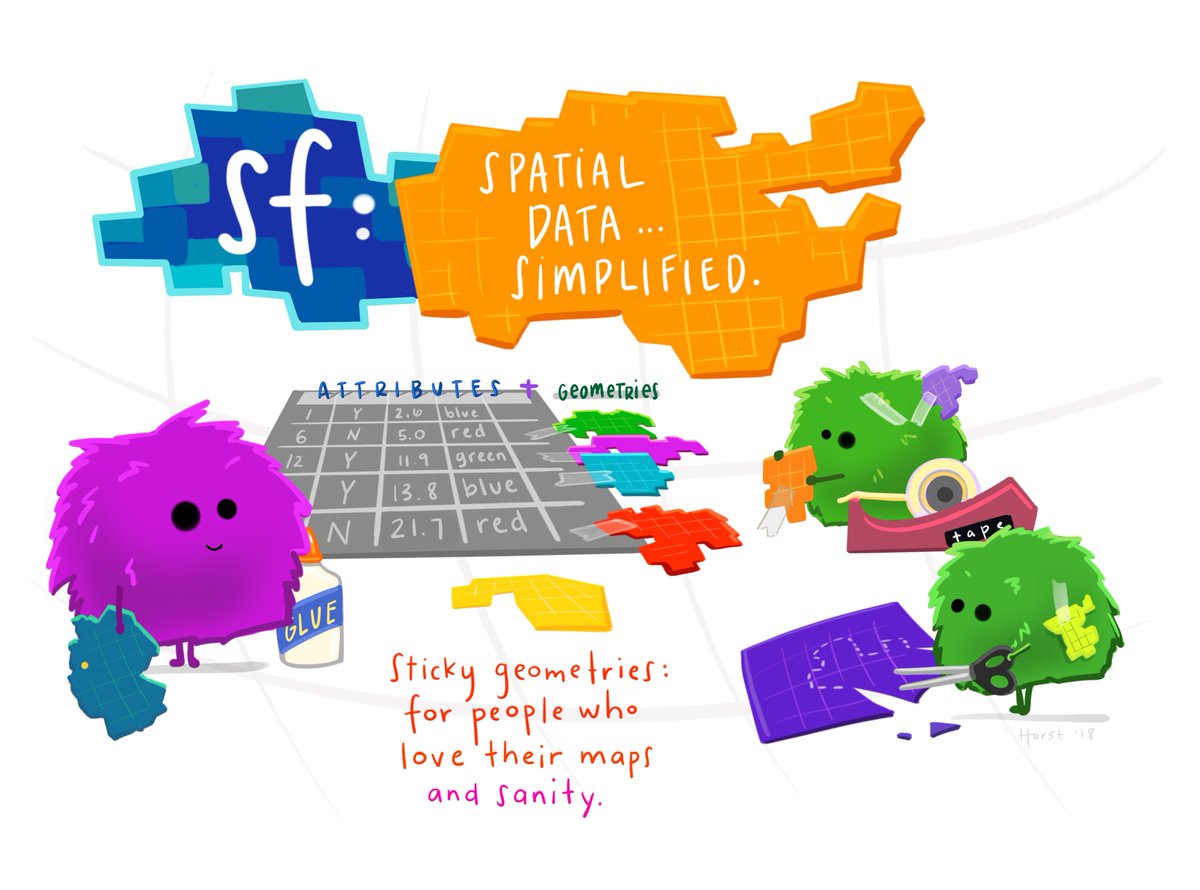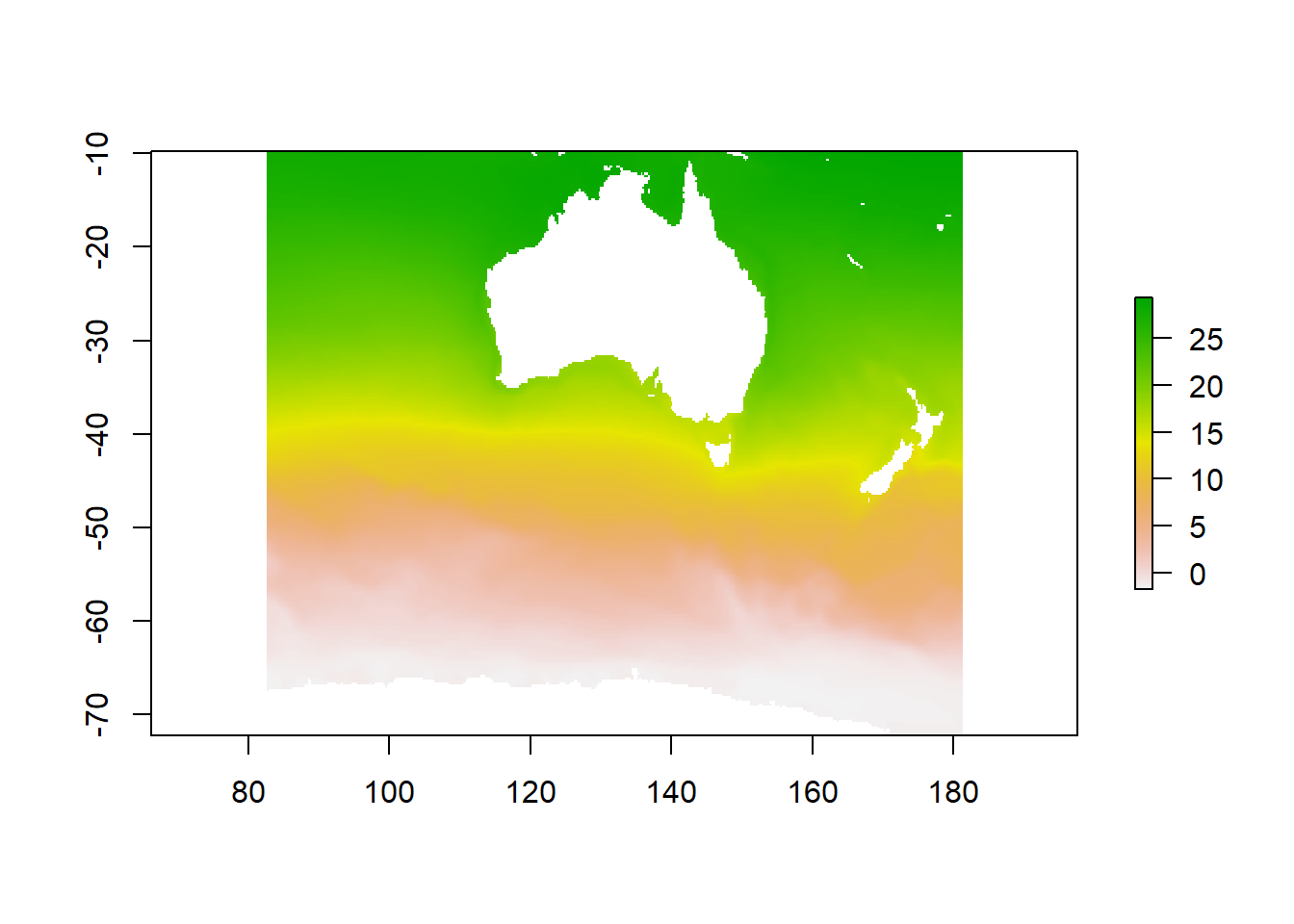Fundamental of Data Science for EESS
R session 06 - Data mapping
Daniel Vaulot
2021-02-24
Outline
- Simple features
- Static maps
- Plotting your data
- Interactive map
Installation and Resources
Packages
New
- sf
- rnaturalearth
- rnaturalearthdata
- leaflet
Previously used
- ggplot2
- stringr
- dplyr
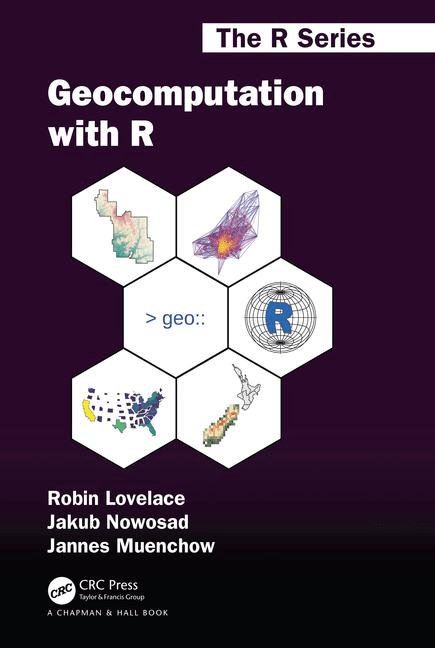
Reading list
Other resources
What we want to do...
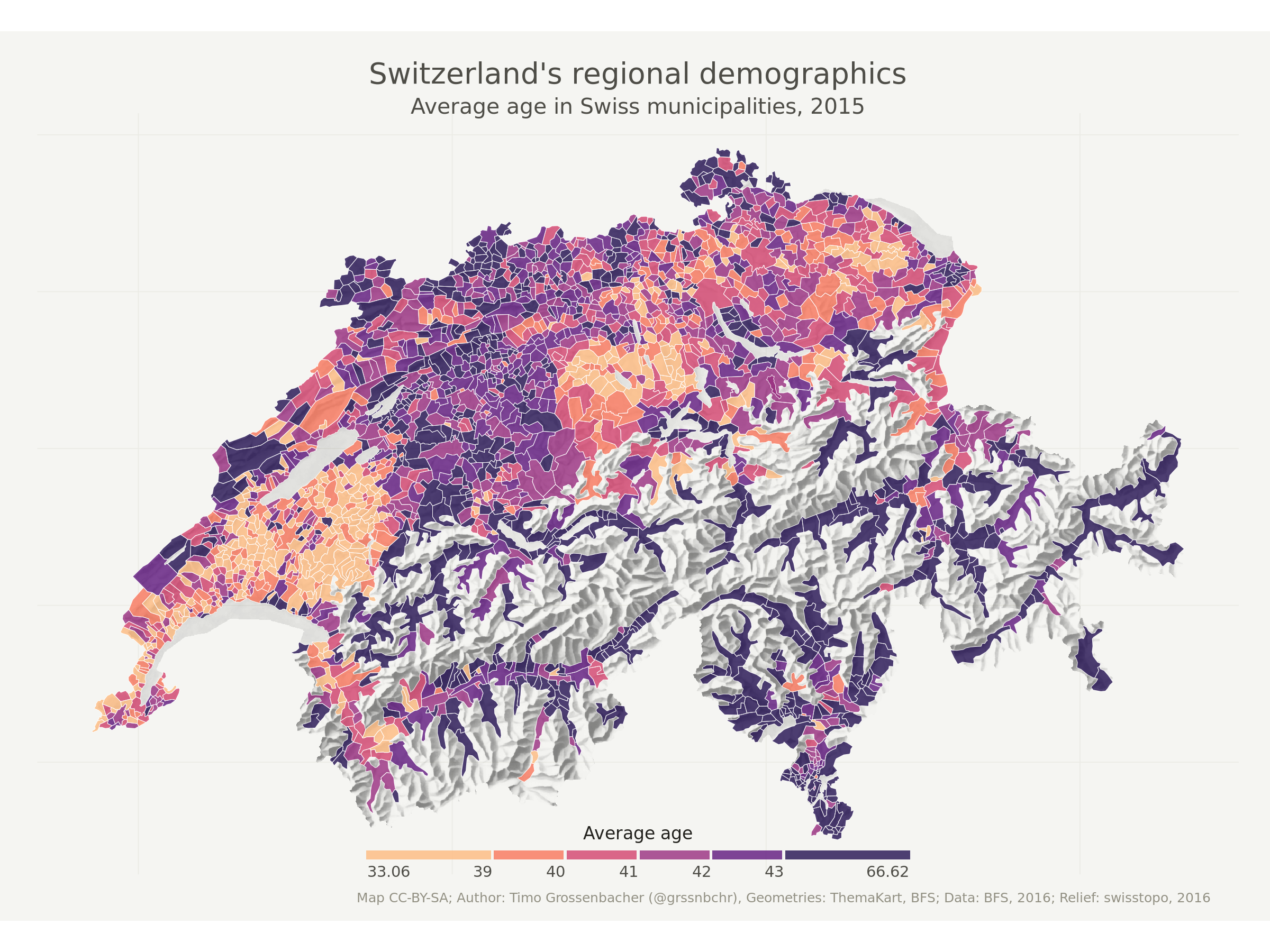
Simple Features (sf)
- Simple features is an open standard developed and endorsed by the Open Geospatial Consortium (OGC).
- Simple features is a hierarchical data model that represents a wide range of geometry types.

Simple Features (sf)
A point is simply a coordinate in 2D (can be also 3D or 4D space)
- POINT (5 2)
A linestring is a sequence of points with a straight line connecting the points
- LINESTRING (1 5, 4 4, 4 1, 2 2, 3 2)
A polygon is a sequence of points that form a closed, non-intersecting ring.
- POLYGON (1 5, 2 2, 4 1, 4 4, 1 5)
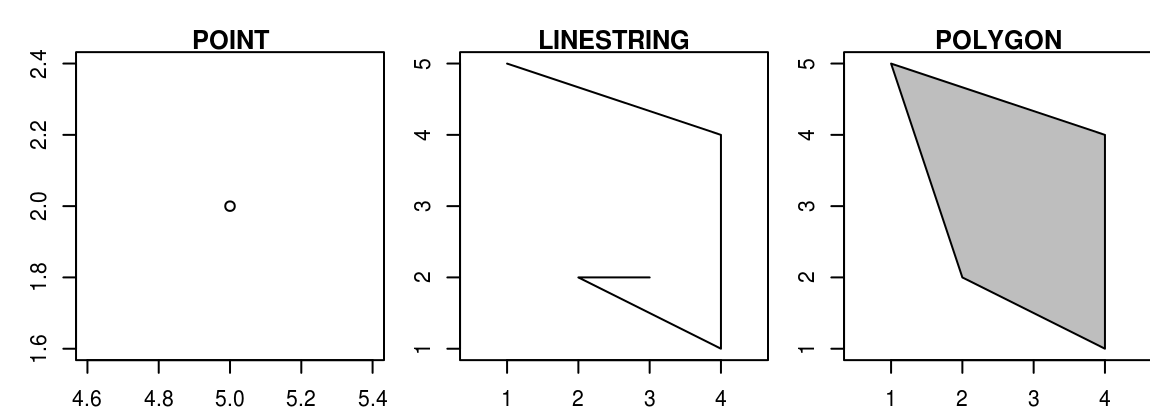
Simple Features (sf)
- MULTIPOINT (5 2, 1 3, 3 4, 3 2)
- MULTILINESTRING ((1 5, 4 4, 4 1, 2 2, 3 2), (1 2, 2 4))
- MULTIPOLYGON (((1 5, 2 2, 4 1, 4 4, 1 5), (0 2, 1 2, 1 3, 0 3, 0 2)))
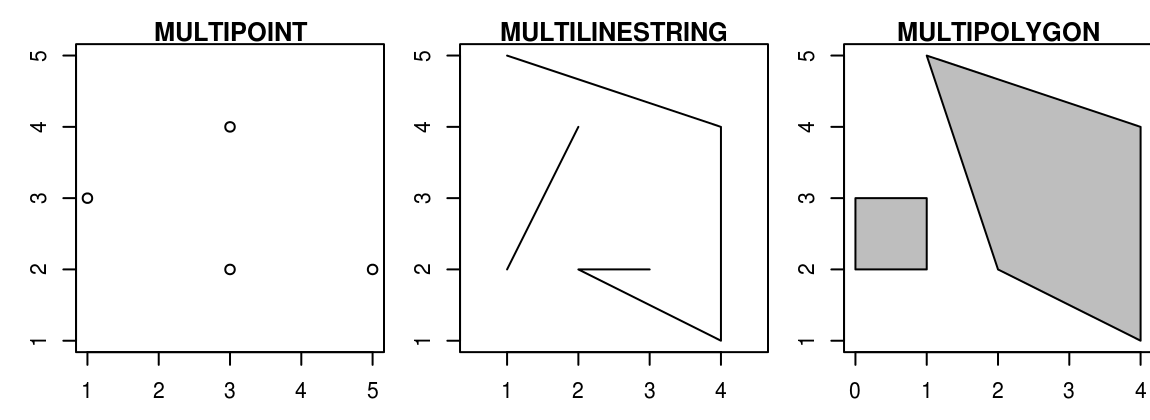
Simple Features (sf)
- A geometry collection can contain any combination of geometries including (multi)points and linestrings
- GEOMETRYCOLLECTION (MULTIPOINT (5 2, 1 3, 3 4, 3 2), LINESTRING (1 5, 4 4, 4 1, 2 2, 3 2))
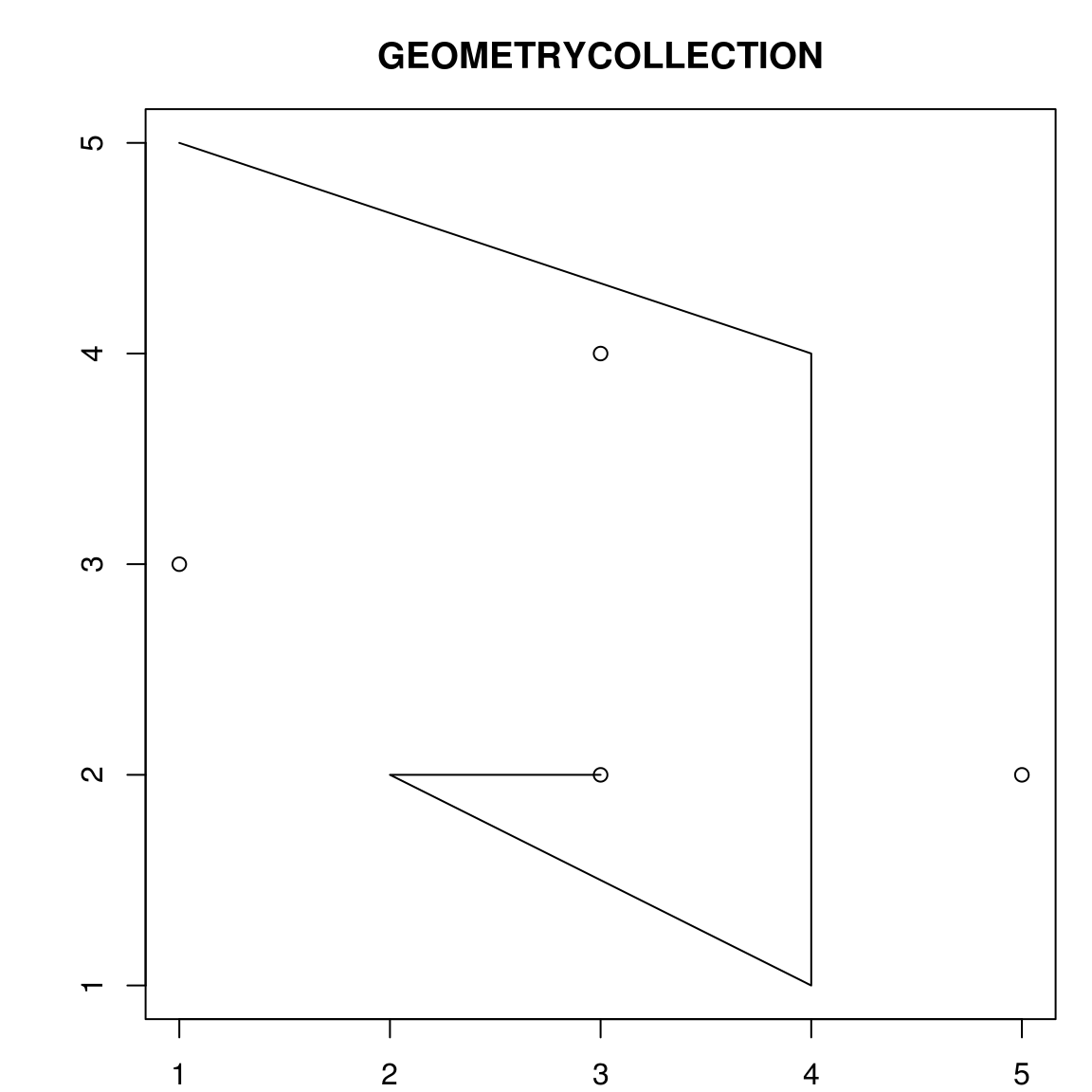
Simple Features (sf)
- Simple feature objects in R are stored in a data frame
- Geographic data occupying a special column, usually named
geomorgeometry.
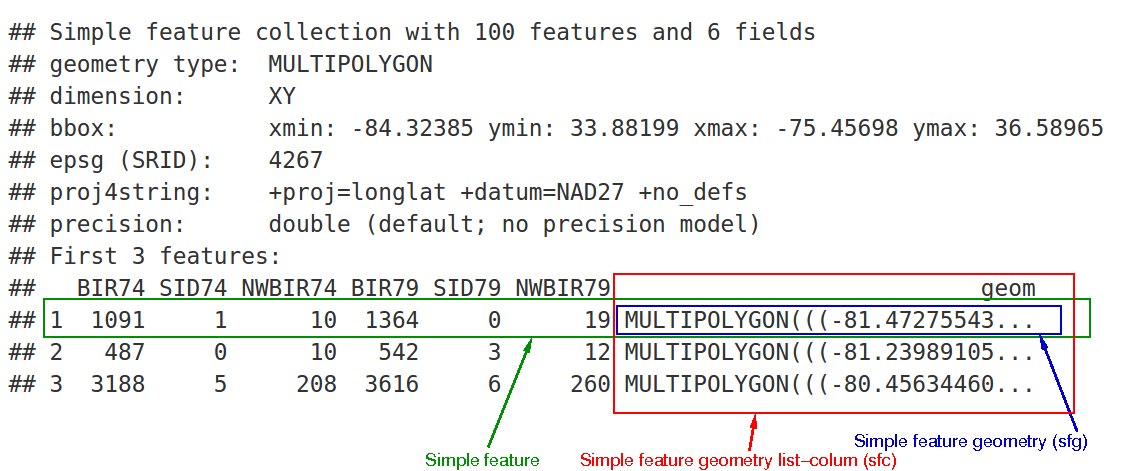
Three classes of sf objects
- sfg : geometry
- sfc : column - set of geometry plus coordinates system
- sf : information about each geometry
Simple Features (sf)
sf geometry (sfg) class
library(sf)Linking to GEOS 3.8.0, GDAL 3.0.4, PROJ 6.3.1Simple Features (sf)
sf geometry (sfg) class
library(sf)Linking to GEOS 3.8.0, GDAL 3.0.4, PROJ 6.3.1- Creating a point from a vector
sf::st_point(c(5, 2))POINT (5 2)Simple Features (sf)
sf geometry (sfg) class
library(sf)Linking to GEOS 3.8.0, GDAL 3.0.4, PROJ 6.3.1- Creating a point from a vector
sf::st_point(c(5, 2))POINT (5 2)- For line, we need to create a matrix with rbind
multipoint_matrix = rbind(c(5, 2), c(1, 3), c(3, 4), c(3, 2))st_multipoint(multipoint_matrix)MULTIPOINT ((5 2), (1 3), (3 4), (3 2))Simple Features (sf)
sf geometry (sfg) class
- For multiline, we need to create a list of matrices
multilinestring_list = list(rbind(c(1, 5), c(4, 4), c(4, 1), c(2, 2), c(3, 2)), rbind(c(1, 2), c(2, 4)))st_multilinestring((multilinestring_list))MULTILINESTRING ((1 5, 4 4, 4 1, 2 2, 3 2), (1 2, 2 4))Simple Features (sf)
sf geometry (sfg) class
- For multiline, we need to create a list of matrices
multilinestring_list = list(rbind(c(1, 5), c(4, 4), c(4, 1), c(2, 2), c(3, 2)), rbind(c(1, 2), c(2, 4)))st_multilinestring((multilinestring_list))MULTILINESTRING ((1 5, 4 4, 4 1, 2 2, 3 2), (1 2, 2 4))- Idem for geometry collection
geometrycollection_list = list(sf::st_multipoint(multipoint_matrix), sf::st_multilinestring(multilinestring_list))st_geometrycollection(geometrycollection_list)GEOMETRYCOLLECTION (MULTIPOINT ((5 2), (1 3), (3 4), (3 2)), MULTILINESTRING ((1 5, 4 4, 4 1, 2 2, 3 2), (1 2, 2 4)))Simple Features (sf)
sf column (sfc) class
List of sfg obkects that also contains also information about the coordinate system
point1 = st_point(c(5, 2))point2 = st_point(c(1, 3))points_sfc = st_sfc(point1, point2)points_sfcGeometry set for 2 features geometry type: POINTdimension: XYbbox: xmin: 1 ymin: 2 xmax: 5 ymax: 3CRS: NAPOINT (5 2)POINT (1 3)Simple Features (sf)
sf column (sfc) class
Now add Coordinate Reference System (crs)
st_sfc(point1, point2, crs = 4326)Geometry set for 2 features geometry type: POINTdimension: XYbbox: xmin: 1 ymin: 2 xmax: 5 ymax: 3geographic CRS: WGS 84POINT (5 2)POINT (1 3)Simple Features (sf)
sf class
Add some information about the geometry.
lnd_point = st_point(c(0.1, 51.5)) # sfg objectlnd_geom = st_sfc(lnd_point, crs = 4326) # sfc objectlnd_attrib = data.frame( # data.frame object name = "London", temperature = 25, date = as.Date("2017-06-21") )st_sf(lnd_attrib, geometry = lnd_geom)Simple feature collection with 1 feature and 3 fieldsgeometry type: POINTdimension: XYbbox: xmin: 0.1 ymin: 51.5 xmax: 0.1 ymax: 51.5geographic CRS: WGS 84 name temperature date geometry1 London 25 2017-06-21 POINT (0.1 51.5)Static maps
Load necessary libraries
library("readxl") # Import the data from Excel filelibrary("dplyr") # filter and reformat data frameslibrary("ggplot2") # graphicslibrary("sf") # simple featureslibrary("rnaturalearth") library("rnaturalearthdata")Static maps
Read the world map data
scalecan be 'small', 'medium', 'large'returnclasscan be 'sp' or 'sf' - sf (simple features) is an evolution of sp
world <- rnaturalearth::ne_countries(scale = "medium", returnclass = "sf")Static maps
The world data are returned as a sf (simple feature) dataframe which contains
- normal fields
- one field called geometry which contains points, lines or polygon coordinate information
colnames(world) [1] "scalerank" "featurecla" "labelrank" "sovereignt" "sov_a3" [6] "adm0_dif" "level" "type" "admin" "adm0_a3" [11] "geou_dif" "geounit" "gu_a3" "su_dif" "subunit" [16] "su_a3" "brk_diff" "name" "name_long" "brk_a3" [21] "brk_name" "brk_group" "abbrev" "postal" "formal_en" [26] "formal_fr" "note_adm0" "note_brk" "name_sort" "name_alt" [31] "mapcolor7" "mapcolor8" "mapcolor9" "mapcolor13" "pop_est" [36] "gdp_md_est" "pop_year" "lastcensus" "gdp_year" "economy" [41] "income_grp" "wikipedia" "fips_10" "iso_a2" "iso_a3" [46] "iso_n3" "un_a3" "wb_a2" "wb_a3" "woe_id" [51] "adm0_a3_is" "adm0_a3_us" "adm0_a3_un" "adm0_a3_wb" "continent" [56] "region_un" "subregion" "region_wb" "name_len" "long_len" [61] "abbrev_len" "tiny" "homepart" "geometry"Static maps
- The field
namecontains the name of the countries,continentthe continent, etc... - The field
geometrycontains the country outlinename continent geometry Aruba North America MULTIPOLYGON (((-69.89912 1...
Static maps
- The field
namecontains the name of the countries,continentthe continent, etc... - The field
geometrycontains the country outlinename continent geometry Aruba North America MULTIPOLYGON (((-69.89912 1...
world$geometry[1]Geometry set for 1 feature geometry type: MULTIPOLYGONdimension: XYbbox: xmin: -70.06611 ymin: 12.423 xmax: -69.8957 ymax: 12.61411CRS: +proj=longlat +datum=WGS84 +no_defs +ellps=WGS84 +towgs84=0,0,0Static maps
A simple world map
- Use
geom_sf
# Set the black and white themetheme_set(theme_bw())ggplot(data = world) + geom_sf()
Static maps
A simple world map
- Use
coord_sf(expand = FALSE)to have the axis labels
ggplot(data = world) + geom_sf() + coord_sf(expand = FALSE)
Static maps
Color continents
- Add
color="white", fill="blue"
ggplot(data = world) + geom_sf(color="white", fill="blue")+ coord_sf(expand = FALSE)
Static maps
Plot population
- Use value of column
pop_est
ggplot(data = world) + geom_sf(aes(fill= pop_est))+ coord_sf(expand = FALSE)
Static maps
Plot population
- Change color scale
- Transform the data
ggplot(data = world) + geom_sf(aes(fill= pop_est)) + coord_sf(expand = FALSE) + scale_fill_viridis_c(trans = "log10")
Static maps
Modify projections
Specify coordinate system: https://geocompr.robinlovelace.net/spatial-class.html#crs-intro
- Lambert projection
- From the North Pole
- "+proj=laea +lat_0=90 +lon_0=0 "
ggplot(data = world) + geom_sf() + coord_sf(expand = FALSE, crs = "+proj=laea +lat_0=90 +lon_0=0 ")
Static maps
Zoom
- Centered on Singapore
ggplot(data = world) + geom_sf() + coord_sf(xlim=c(90,110), ylim=c(-10,10))Resolution is not optimal

Static maps
Add country names
- Must first define coordinates centroid of each country (X and Y)
world_centroids<- st_coordinates(st_centroid(world$geometry))Static maps
Add country names
- Must first define coordinates centroid of each country (X and Y)
world_centroids<- st_coordinates(st_centroid(world$geometry))- Bind the 2 tables
world_centroids <- cbind(world, world_centroids)| name | X | Y | geometry |
|---|---|---|---|
| Aruba | -69.98268 | 12.52088 | MULTIPOLYGON (((-69.89912 1... |
Static maps
Add country names
- Use
geom_text()
ggplot(data = world_centroids) + geom_sf() + coord_sf(xlim=c(70,130), ylim=c(-20,20)) + geom_text(aes(x = X, y=Y, label=name), size=5) + xlab("Longitude") + ylab("Latitude")
Plot data
Read the data
bolido <- readxl::read_excel("data/bolido.xlsx")| cruise | station_id | date | depth_level | depth | latitude | longitude | oceanic_region | temperature | salinity | reads_total | bolido_reads | bolido_pct | species_dominant |
|---|---|---|---|---|---|---|---|---|---|---|---|---|---|
| MALINA | 430 | 2009-08-18 | surface | 3 | 71.1300 | -136.420 | Beaufort Sea | -0.804 | 25.935 | 10495 | 4 | 0.0381134 | Parmales_env_3B_sp. |
| MALINA | 460 | 2009-08-19 | surface | 4 | 70.4000 | -136.030 | Beaufort Sea | 0.076 | 25.384 | 9591 | 4 | 0.0417058 | Parmales_env_3B_sp. |
| MALINA | 540 | 2009-08-17 | surface | 3 | 70.4500 | -137.530 | Beaufort Sea | -0.610 | 26.246 | 9900 | 14 | 0.1414141 | Parmales_env_3B_sp. |
| MALINA | 620 | 2009-08-11 | surface | 3 | 70.6800 | -139.627 | Beaufort Sea | 1.231 | 22.522 | 7557 | 11 | 0.1455604 | Parmales_env_3B_sp. |
| MALINA | 670 | 2009-08-10 | surface | 3 | 69.7980 | -138.441 | Beaufort Sea | 3.740 | 23.560 | 8348 | 22 | 0.2635362 | Parmales_env_3B_sp. |
| MALINA | 760 | 2009-08-12 | surface | 3 | 70.3300 | -140.470 | Beaufort Sea | 0.511 | 22.455 | 8319 | 6 | 0.0721241 | Parmales_env_3A_sp. |
| CASES | CA15 | 2003-10-01 | surface | 29 | 71.5367 | -126.955 | Arctic Ocean | -0.780 | 30.620 | 12354 | 211 | 1.7079488 | Parmales_env_1_X_sp. |
| CASES | 200 | 2003-11-01 | surface | 35 | 69.9290 | -126.489 | Arctic Ocean | -1.460 | 31.500 | 12797 | 544 | 4.2509963 | Parmales_env_1_X_sp. |
| ArcticNet | CA18 | 2005-09-01 | surface | 32 | 70.6663 | -122.993 | Arctic Ocean | -1.040 | 32.040 | 9531 | 43 | 0.4511594 | Triparma_laevis_clade |
| CFL | 405 | 2007-11-01 | surface | 10 | 70.6217 | -123.001 | Arctic Ocean | -1.650 | 30.130 | 13471 | 20 | 0.1484671 | Parmales_env_1_X_sp. |
Plot data
A bit of biology... Bolidophyceae and Parmales
Triparma
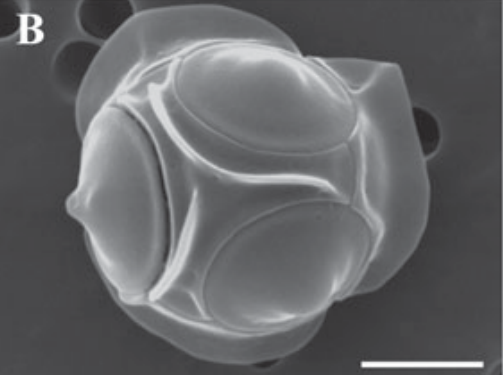
- Covered with silica
Bolidomonas
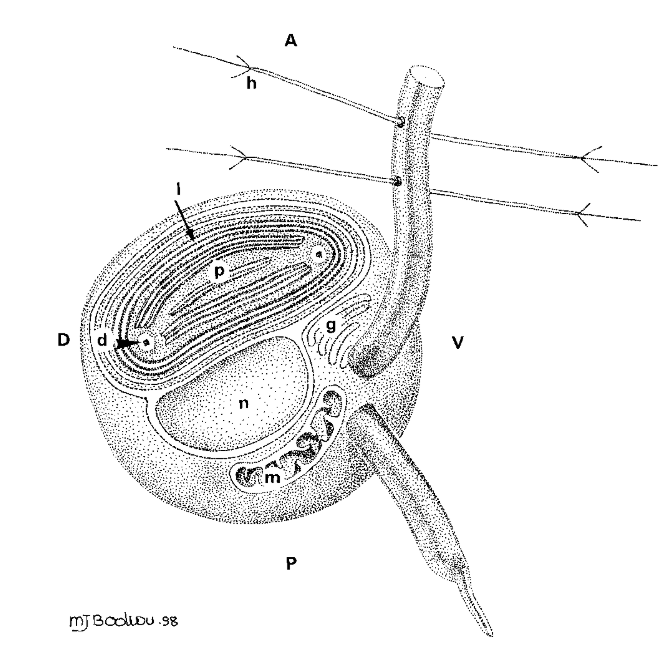
- 1.5 µm
Guillou, L., Chrétiennot-Dinet, M.-J., Medlin, L.K., Claustre, H., Loiseaux-de Goër, S. & Vaulot, D. 1999. J. Phycol. 35:368–81.
Ichinomiya, M., Yoshikawa, S., Kamiya, M., Ohki, K., Takaichi, S. & Kuwata, A. 2011. J. Phycol. 47:144–51.
Ichinomiya, M., dos Santos, A.L., Gourvil, P., Yoshikawa, S., Kamiya, M., Ohki, K., Audic, S. et al. 2016. ISME J. 10:2419–34.
Plot data
Plot the stations where Bolidophyceae found
- Filter by to remove stations where Bolido are not present
ggplot(data = world) + geom_sf()+ coord_sf(expand = FALSE) + geom_point(data=filter(bolido, bolido_pct >0), aes(x=longitude, y=latitude), size=3)
Plot data
Percentage of Bolidophyceae
- Filter by to remove stations where Bolido are not present
ggplot(data = world) + geom_sf()+ coord_sf(expand = FALSE) + geom_point(data=filter(bolido, bolido_pct >0), aes(x=longitude, y=latitude, size=bolido_pct), color="blue")
Plot data
Dominant species of Triparma
- Color with species
- Put species legend at bottom on 2 rows
ggplot(data = world) + geom_sf()+ coord_sf(expand = FALSE) + geom_point(data=filter(bolido, bolido_pct >0, stringr::str_detect(species_dominant, "Triparma")), aes(x=longitude, y=latitude, color=species_dominant), size = 4) + scale_colour_viridis_d() + theme(legend.position="bottom") + guides(color=guide_legend(nrow=2, byrow=TRUE))
Interactive maps
Leaflet
- Javascript: https://leafletjs.com/
- Leaflet for R : https://rstudio.github.io/leaflet/
- All functions from
leafletpackage
library("leaflet")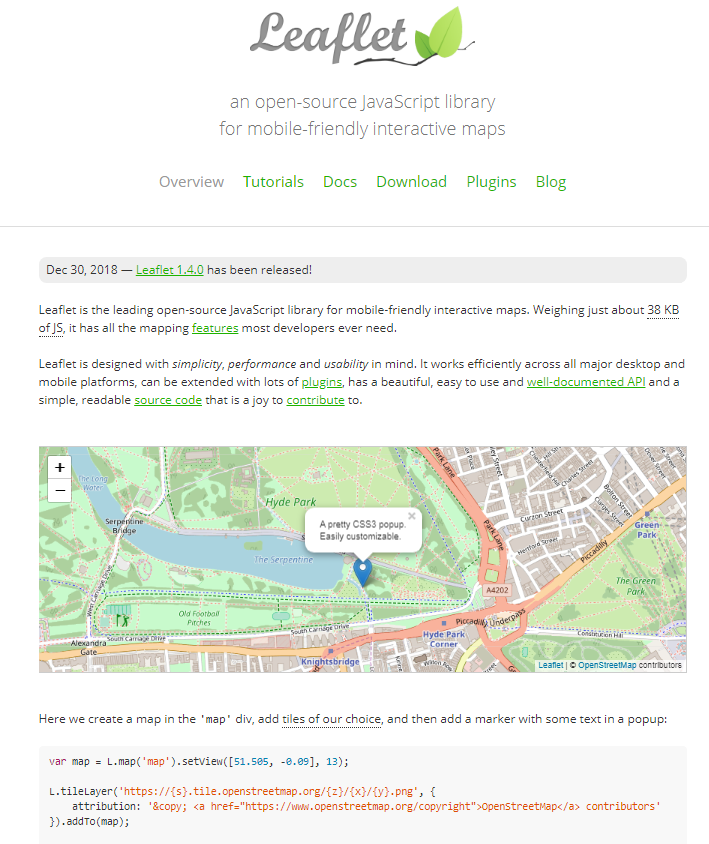
Interactive maps
Add background (tiles)
leaflet(width = 750, height = 500)%>% addTiles()


Interactive maps
Set limits and zoom
leaflet(width = 750, height = 500)%>% addTiles() %>% setView(lng=0, lat=0, zoom=2)







Interactive maps
Adding data points
leaflet(width = 750, height = 500)%>% addTiles() %>% setView(lng=0, lat=0, zoom=2) %>% addCircleMarkers(data = bolido, lat = ~ latitude, lng = ~ longitude, radius = 5, label = ~ station_id, labelOptions = labelOptions(textsize = "10px", noHide = T), clusterOptions = markerClusterOptions())







Interactive maps
Adding background
leaflet(width = 750, height = 500)%>% addTiles() %>% setView(lng=0, lat=0, zoom=2) %>% addCircleMarkers(data = bolido, lat = ~ latitude, lng = ~ longitude, radius = 5, label = ~ station_id, labelOptions = labelOptions(textsize = "10px", noHide = T), clusterOptions = markerClusterOptions()) %>% addProviderTiles(providers$Esri.OceanBasemap)







Other packages
Thematic maps (tmap)
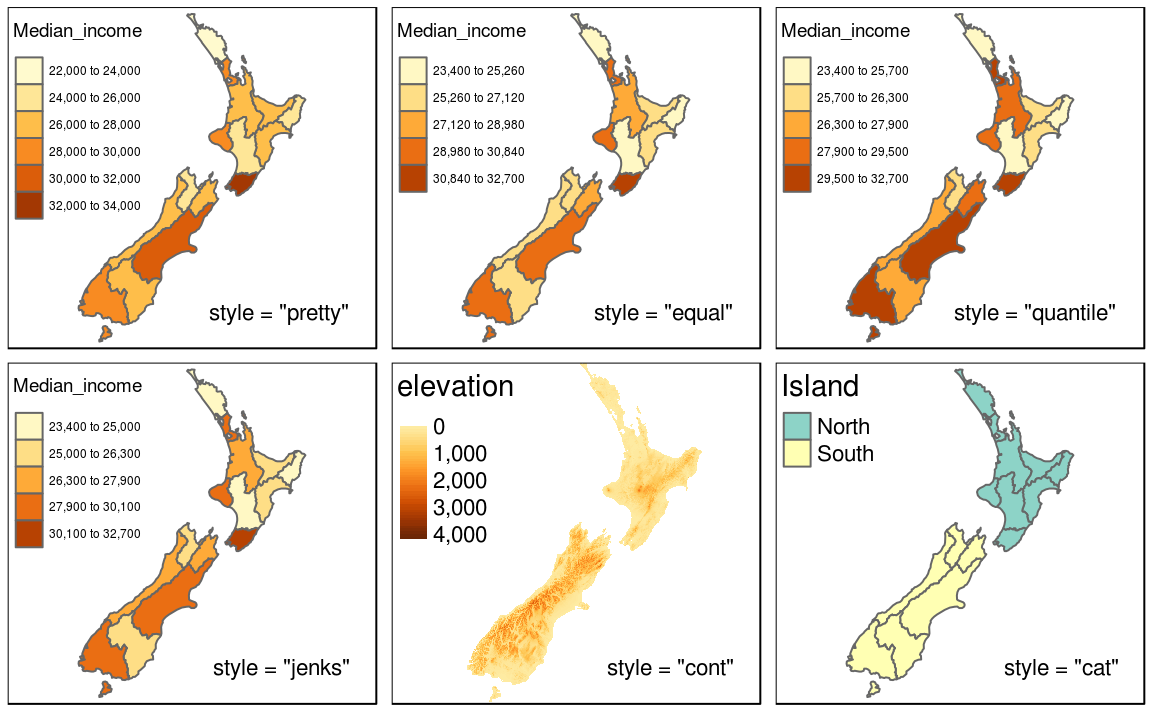
Your turn
Use four shapes files
- world
- world_centroids
- bathymetry 0 m
- bathymetry 200 m
https://www.naturalearthdata.com/downloads/10m-physical-vectors/10m-bathymetry/
- Files can be read with
sf::read_sf
bathy_0 <- read_sf("data/ne_10m_bathymetry_L_0.shp")bathy_200 <- read_sf("data/ne_10m_bathymetry_K_200.shp")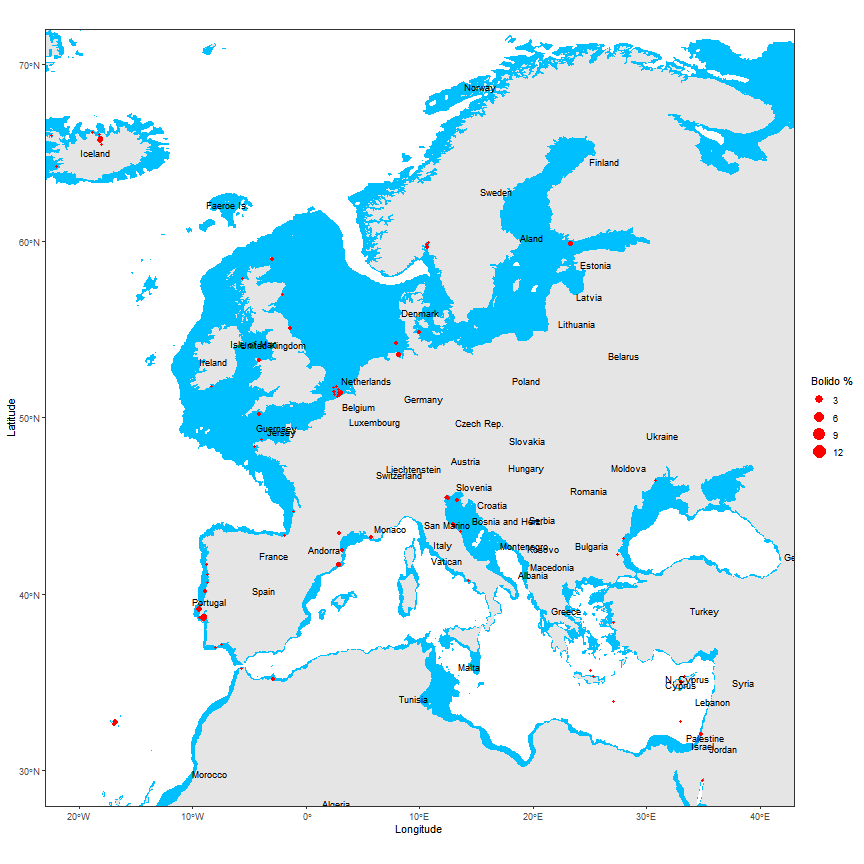
Your turn
exclude = true
# Very tricky must use the Windows file convention (backslash and not slash) !!!bathy_0 <- read_sf("data/ne_10m_bathymetry_L_0.shp")bathy_200 <- read_sf("data/ne_10m_bathymetry_K_200.shp")theme_set(theme_bw())ggplot() + geom_sf(data = world, fill="grey90", color="grey90") + geom_sf(data = bathy_0, fill="deepskyblue", color="deepskyblue") + geom_sf(data=bathy_200, fill="white", color="white")+ coord_sf(xlim=c(-20,40), ylim=c(30,70)) + geom_point(data=filter(bolido, bolido_pct >0), aes(x=longitude, y=latitude, size=bolido_pct), color="red")+ geom_text(data = world_centroids, aes(x = X, y=Y, label=name), size=3) + xlab("Longitude") + ylab("Latitude") + labs(size = "Bolido %")Recap
- Simple features
- Static maps
- Plotting your data
- Interactive map
Topics to explore on your own
- Strings and date manipulation
- Text mining
- Web mining
- Markdown: books, web sites, presentations
- Creating Packages
- Interface to Databases (MySQL)
C'est fini...
